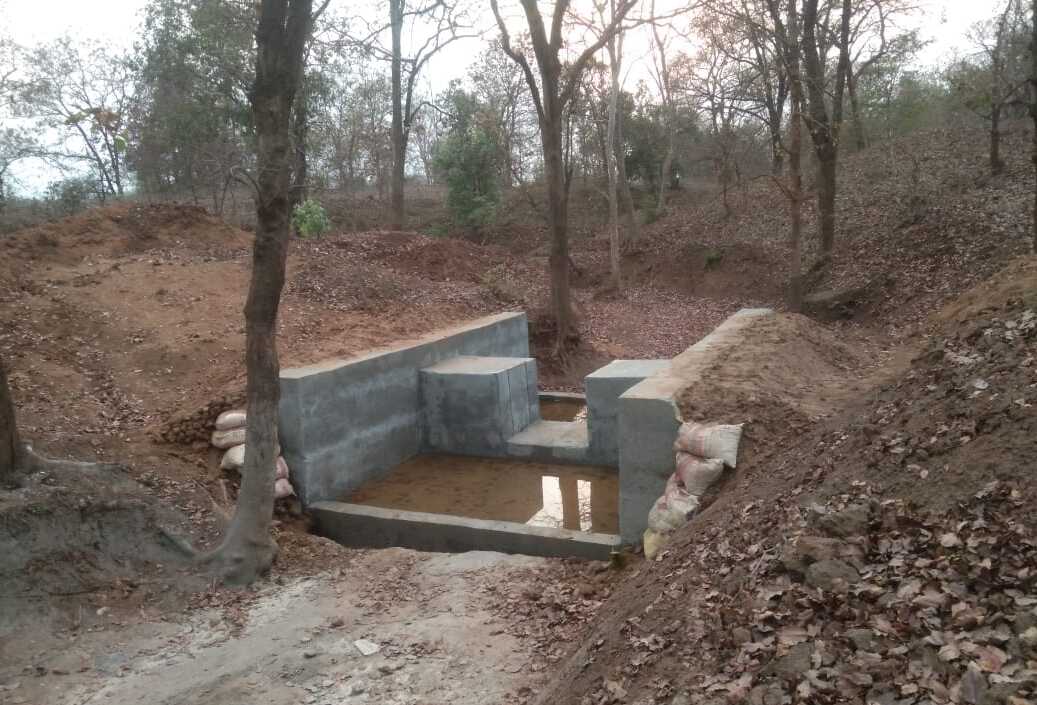
Forest fires: Local communities best suited to protect, increase green cover
Forest fires have been raging across the country, destroying trees in thousands of acres of land and leaving several animals homeless or even dead. Starting with Odisha in March, the news have been coming thick and fast from states of Uttarakhand, Madhya Pradesh, Maharashtra and Chhattisgarh to name a few. While the jury is out to decide who lit the first twig, it is quite evident that lack of effective control and monitoring on part of the government machinery are primarily responsible for the loss of such rich biodiversity. So, instead of blaming the forest department, why not put the responsibility of looking after forests to the local community?

Forest fires have been raging across the country, destroying trees in thousands of acres of land and leaving several animals homeless or even dead. Starting with Odisha in March, the news have been coming thick and fast from states of Uttarakhand, Madhya Pradesh, Maharashtra and Chhattisgarh to name a few.
While the jury is out to decide who lit the first twig, it is quite evident that lack of effective control and monitoring on part of the government machinery are primarily responsible for the loss of such rich biodiversity.
So, instead of blaming the forest department, why not put the responsibility of looking after forests to the local community?
A village that manages its own forest
Pathree in Balaghat district of Madhya Pradesh has an attached forest patch of 130 acres, which is governed by an independent forest rights committee (Sarvajanik Bid Samiti) set up by the gram panchayat and not by the state forest department. “I have not heard of a single instance of fire in our forest since the British era,” says Pannalal Nagpure, Pathree sarpanch.
The elected members take decisions regarding use of forest produce – minor and major – with the sole objective of meeting every day requirements of the villagers (mainly firewood and fodder for animals) while maintaining the tree density. Was this not the reason to frame the Forest Rights Act of 2006?
Villagers understand that saving our jungles – the green lungs required to combat climate change – is not possible without considering the needs of the community that depends on them for their survival.
Pathree village has been meeting this dual goal efficiently for several years now without complaints or conflicts. The village leases out palash trees for lac cultivation, which generates revenue for the locals. Palash (butea monosperma) is known to support insect Laccifer lacca, which produces lac, a high commercial value forest produce.
The forest rights committee here is creative in its approach towards sustaining the forest and generating revenue for the gram panchayat. A 16 acre patch is good for growing grass, which goes as tall as 6 feet. Villagers need it to feed their cattle. The committee has put a price on this grass. “We regulate how much of this grass can be cut. The only condition is the buyer has to cut the grass manually and not allow animals to graze directly, because grazing animals may chew the grass from its roots, thus preventing regeneration,” says Lakhanlal Lilhare, the president of the committee. Even the dry grass is sold for lighting the pyre at funerals.
The Lodhis, a dominant community here, uses the trunk of ‘Savar’ (Red Silk Cotton tree) as pavilion poles during marriage ceremonies. “Every Lodhi marriage needs four such poles, which means four Savar trees will have to be cut for every marriage ceremony. The forest committee prepared a permanent set of four logs and lends it to whoever needs it. This stopped the practice of cutting Savar trees for marriages in our village,” says Nagpure, the sarpanch.
Also read: Rajasthan plans ‘secret fund’ to fight crimes, curb mining in new forest law

This village knows how to protect its forest from blaze
Sarmoli village of Pithoragarh in Uttarakhand, too is reaping the benefits of community forests. The village has a definitive and time-tested method to check forest fires. Firstly, the villagers regularly collect dry wood and dry leaves so that in case of a natural fire during summer, the flames do not spread. Secondly, they have identified nearby water sources which they can run to in case the flames spread.
Mallika Virdi, the head of Sarmoli Van Panchayat, says, “As long as every villager has a sense of belonging towards the forest, he or she will protect it.”
Today, the Sarmoli Van (Jungle) Panchayat is counted among the best in the country. “Wherever forests meet basic needs of people, they are healthy. In a mountainous terrain like Uttarakhand, they are vital to meet people’s needs for food, water, fire wood and animal fodder,” says Virdi.
There are about 12,000 van panchayats in Uttarakhand that roughly covers 14% of the total wild area of the state. Each of this community forest has its own rules, which suits the local conditions and people’s necessities. The panchayat even fines people for breaking any of the set rules.
“Several fires are a result of conflicts between the forest department and the local dwellers. At times the government is unable to provide timely compensation to people, who lost their near and dear ones or animals to tiger or leopard attacks. The forest dwellers then vent out their anger by starting a blaze. By taking locals into confidence, the forest department can control fires immediately. Unfortunately, it becomes a forest department Vs villagers situation when in reality the two should stand together to protect the jungles and reap its benefits at the same time,” said a forest official.
Also read: Specialist birds’ population declining in Himalayas due to hardwood forest loss
Community participation to restore forests
A recent study published in Nature Ecology and Evolution highlights the role communities can play in restoration of lost or degraded jungles. The world over, about 30 crore people (roughly 40% of India’s population) live on land where tropical forests could be restored. The success and viability of restoration projects can only be ensured through community participation, says the study.
India is uniquely placed in empowering communities to manage and restore forests, thanks to the Scheduled Tribes and Other Traditional Forest Dwellers (Recognition of Forest Rights) Act of 2006, popularly known as the Forest Rights Act (FRA) of 2006. The Act empowers locals to reap benefits by ascertaining their right over minor forest produce, which also encourages them to protect the forest that is responsible for their survival. States like Gujarat, Maharashtra, Chhattisgarh, Odisha and Jharkhand have made good use of the Forest Rights Act to empower tribals who have been traditionally living and surviving on these jungles.
Unfortunately, there have been systematic attempts to weaken the Forest Rights Act by transferring the rights over forest wealth in the hands of government, which wants to use it to promote commercial plantation like nilgiri, teak etc. Planting same species of trees results in loss of diversity and creates mono cropping. People dependent on forests meet their requirements by collecting and selling minor forest produce like ‘mahua’ flowers in Central India. Mono cropping is done with the sole purpose of chopping trees and it benefits the rich and influential, not the tribals — the ‘guardians of our jungles’ for generations.
(This is the second in a series of seven articles to appear in this space in the run up to Earth Day, which falls on April 22).


